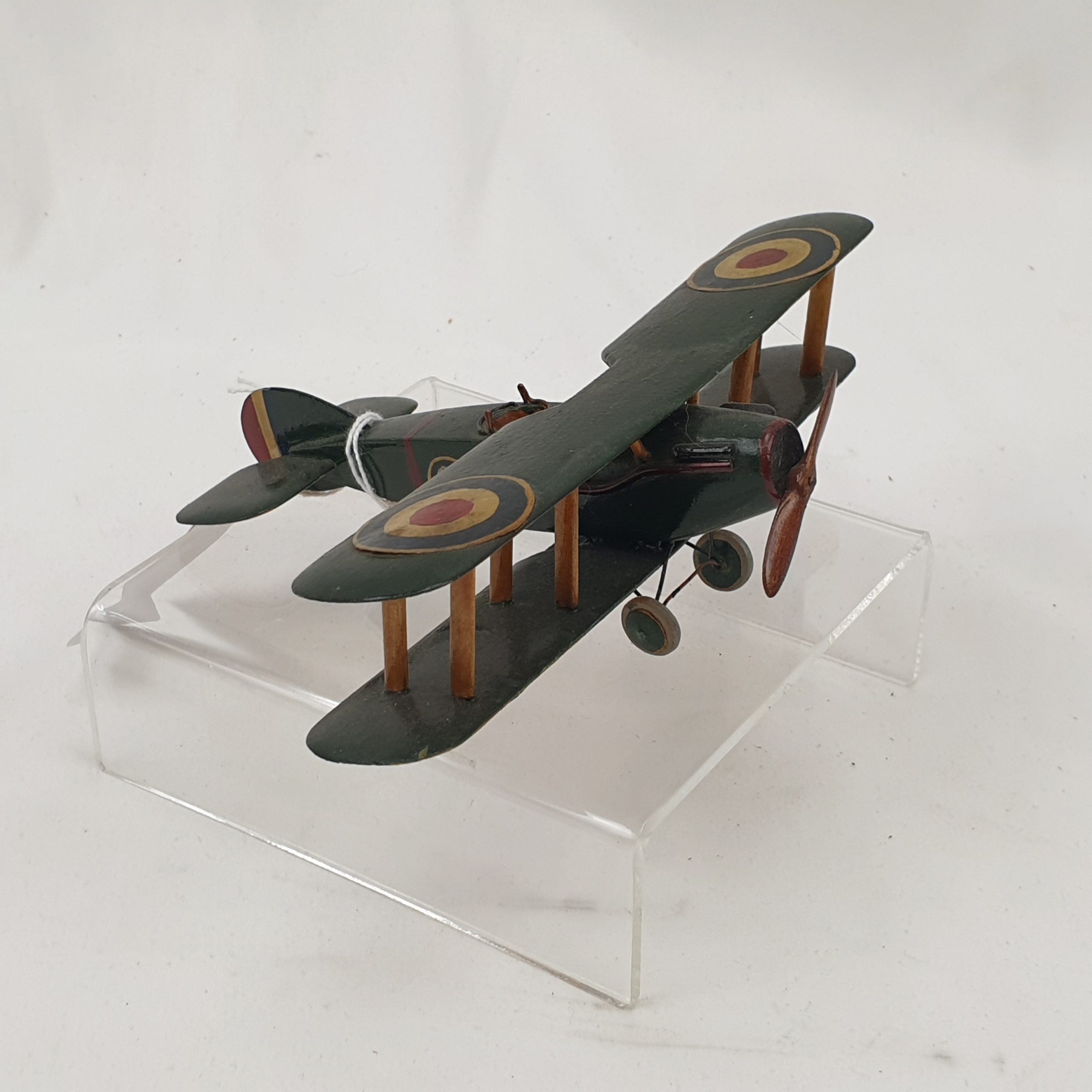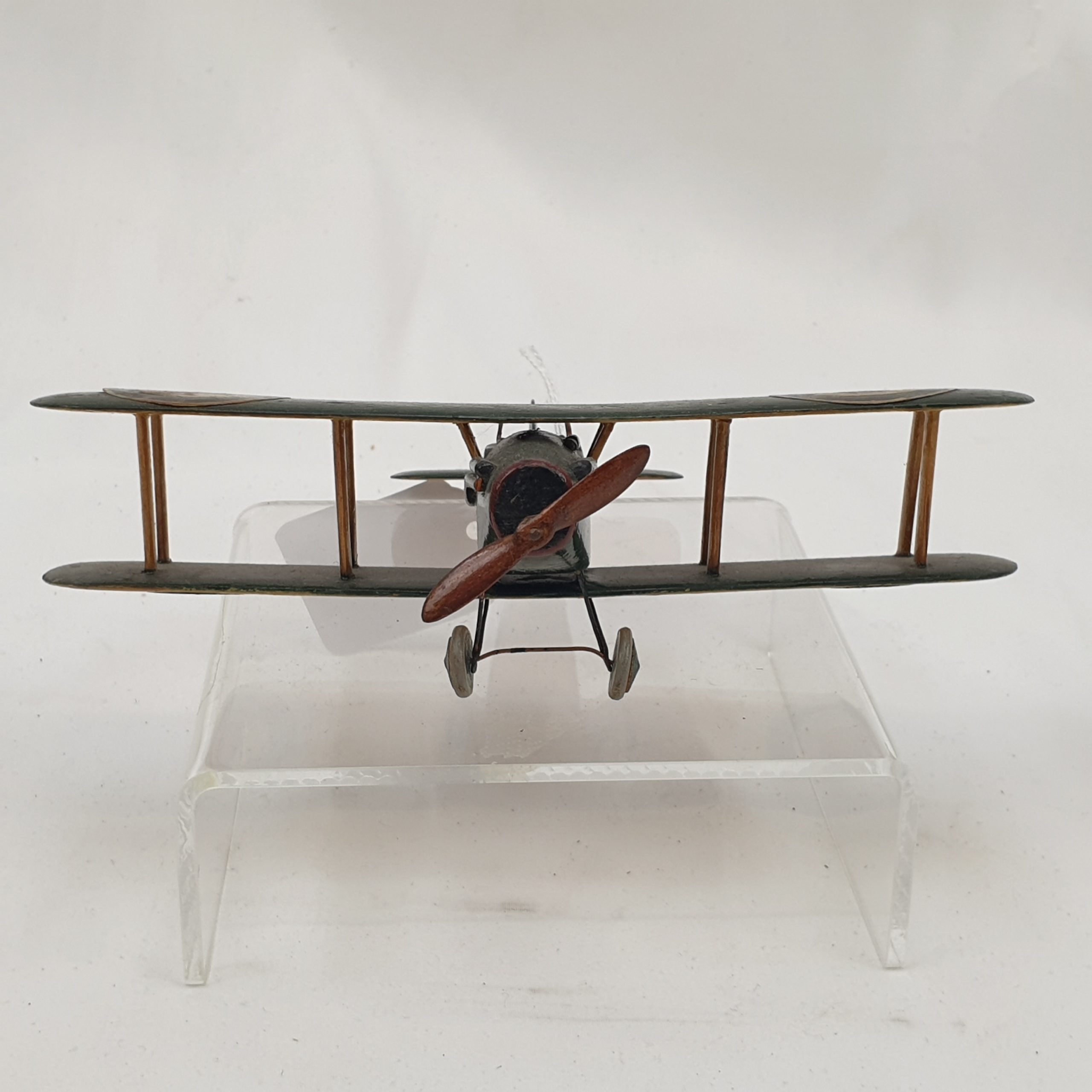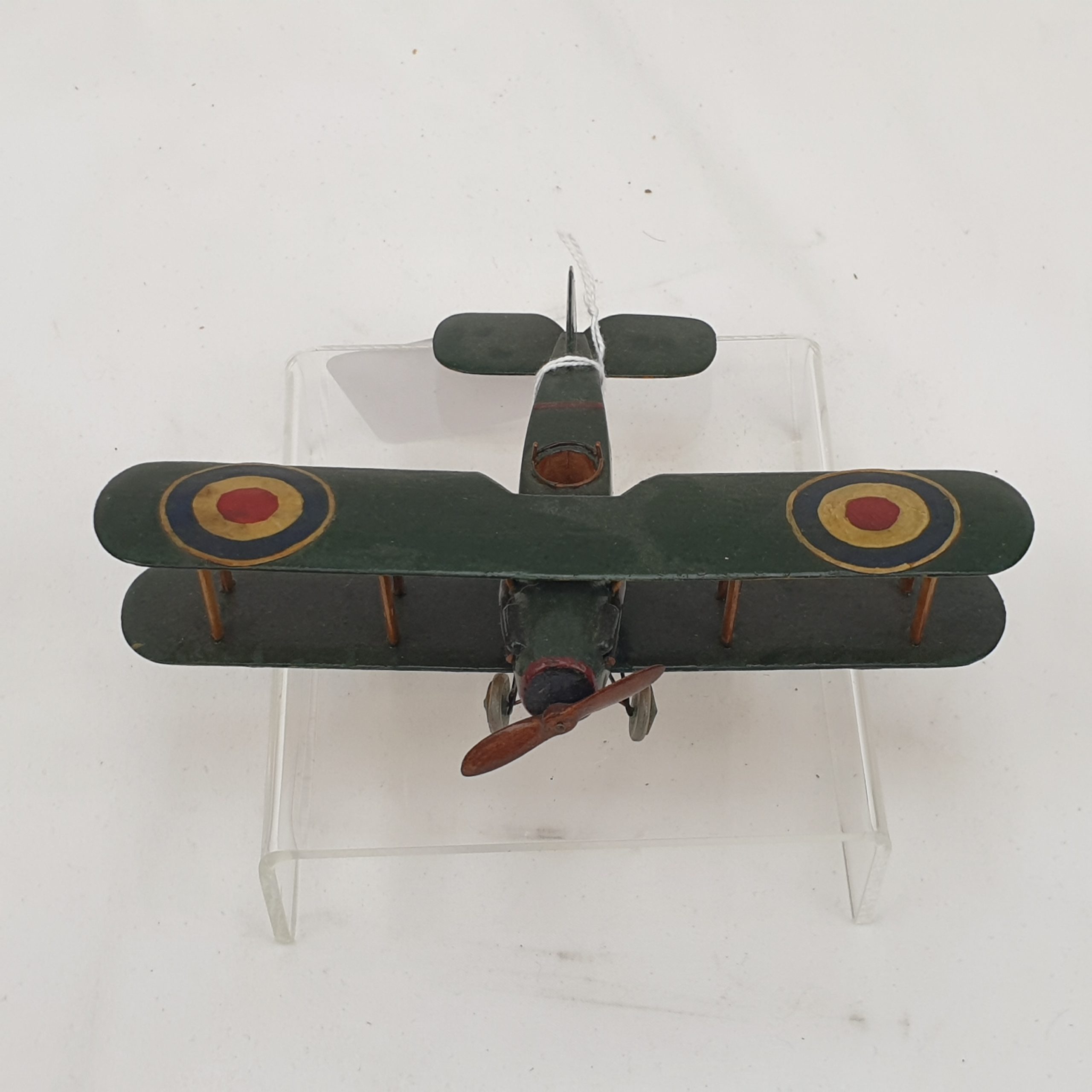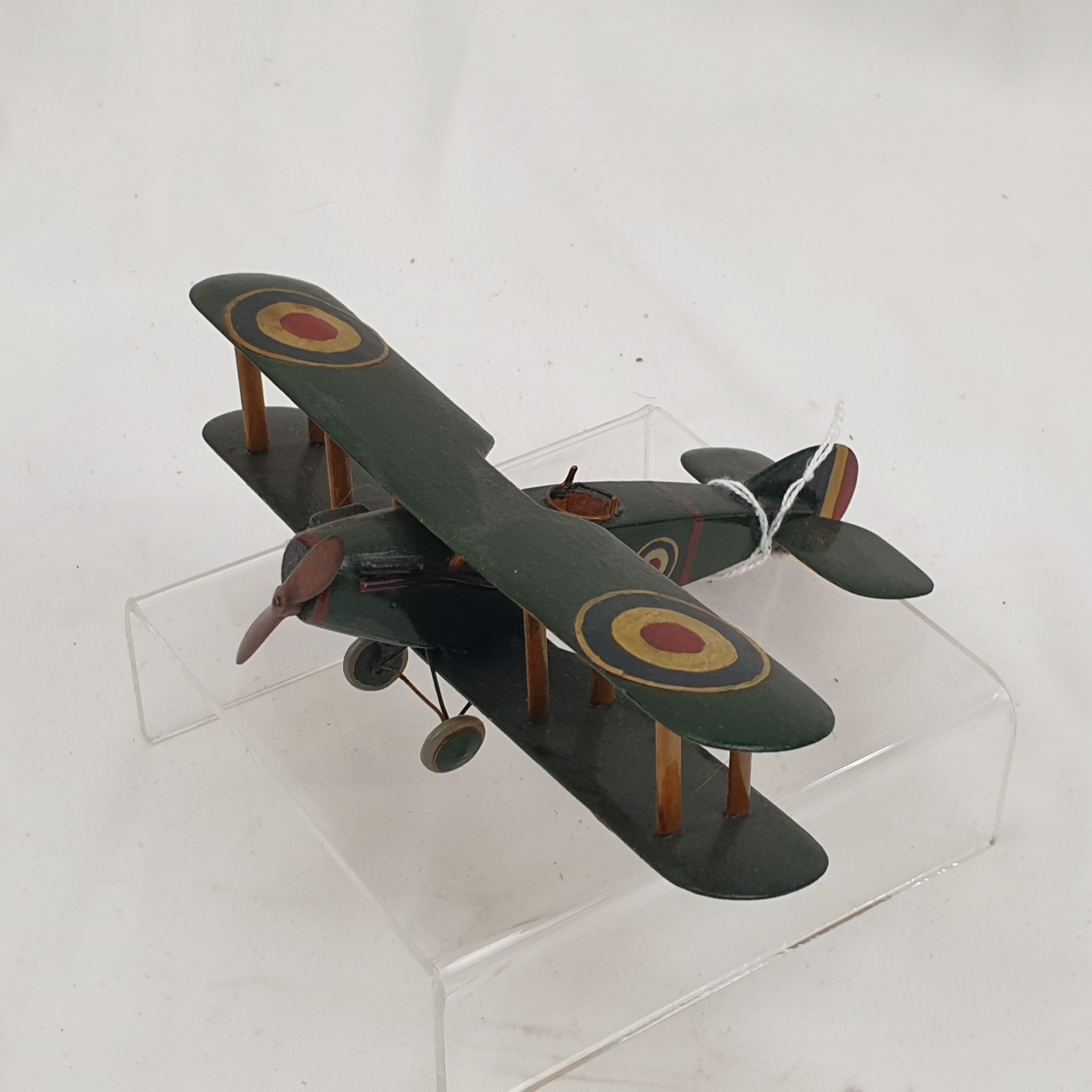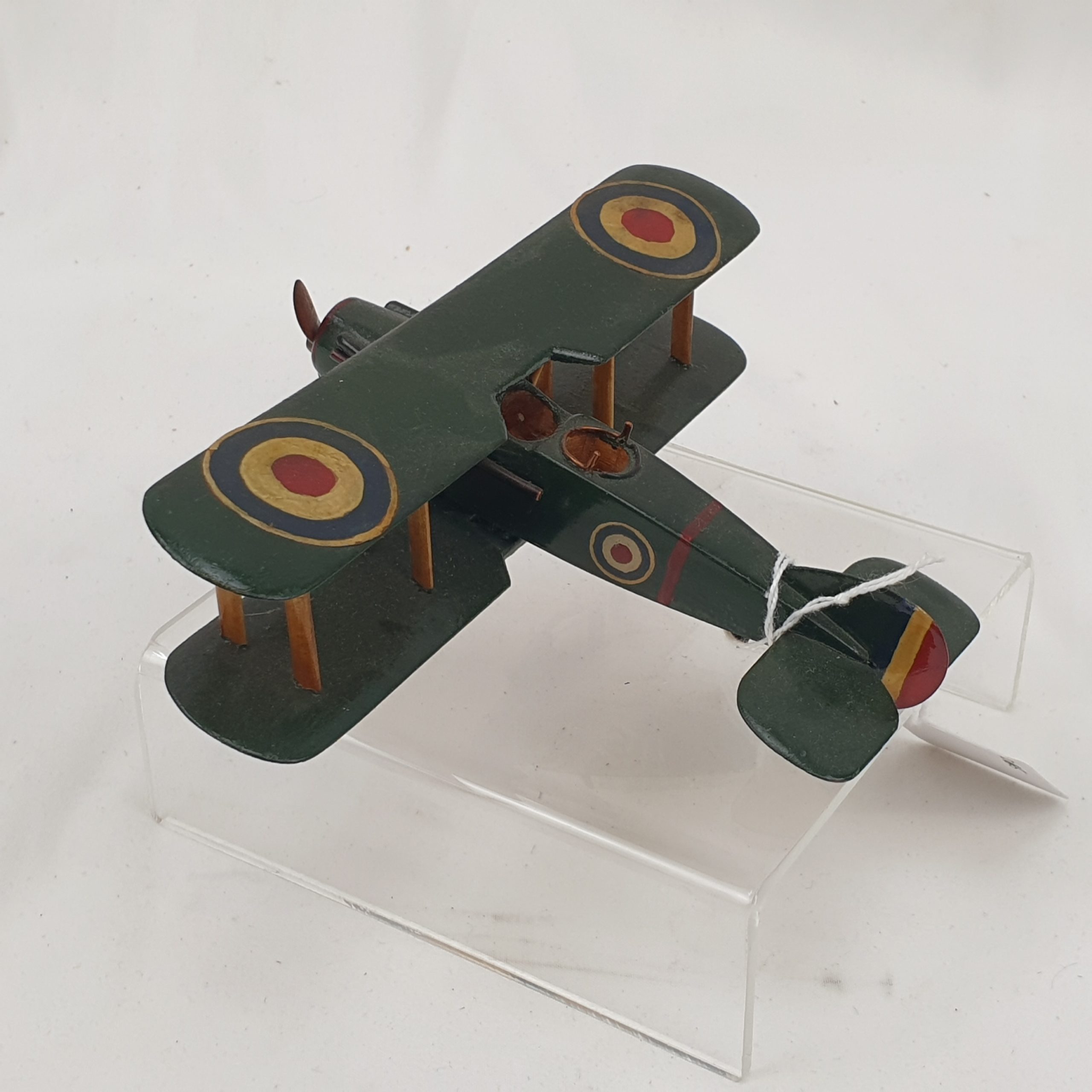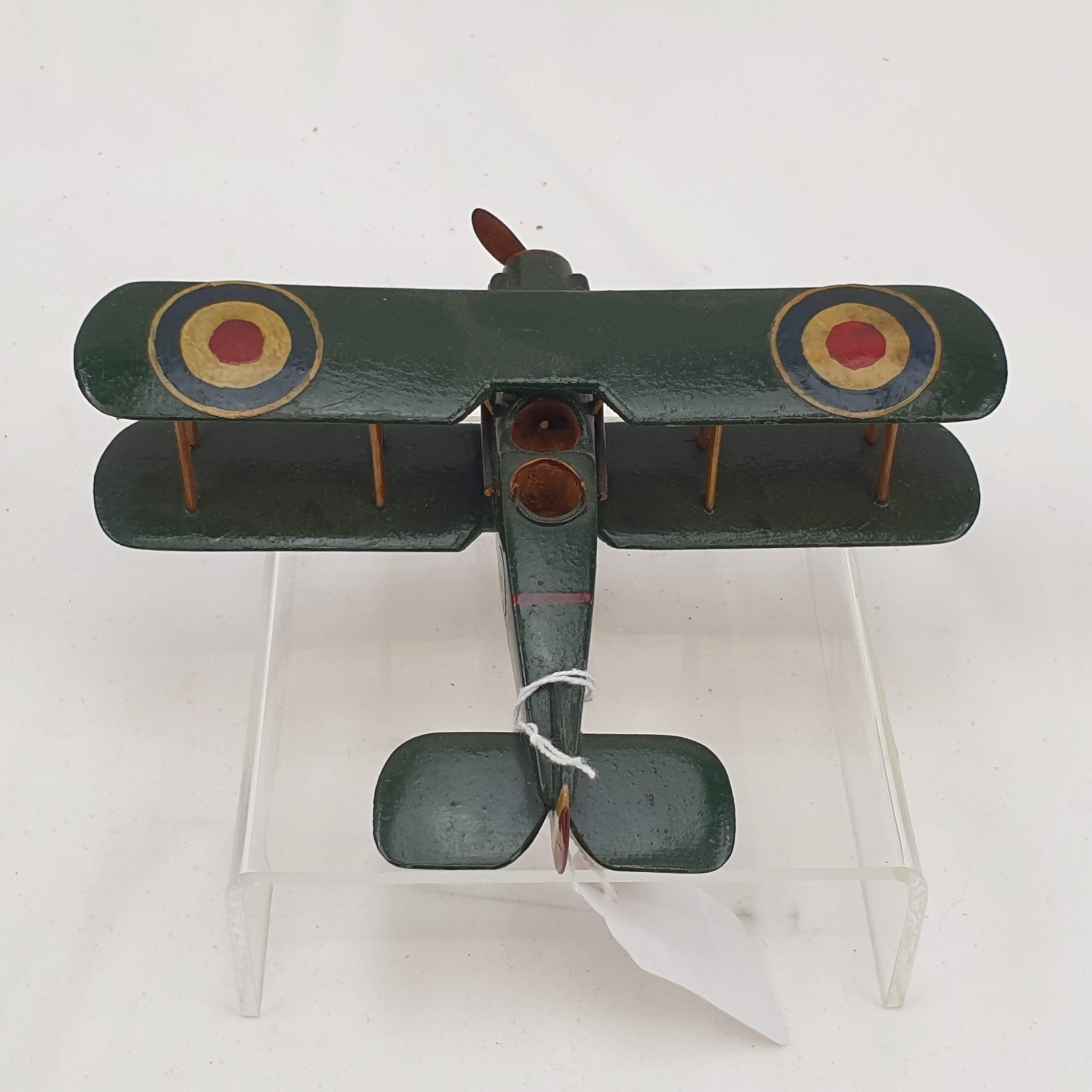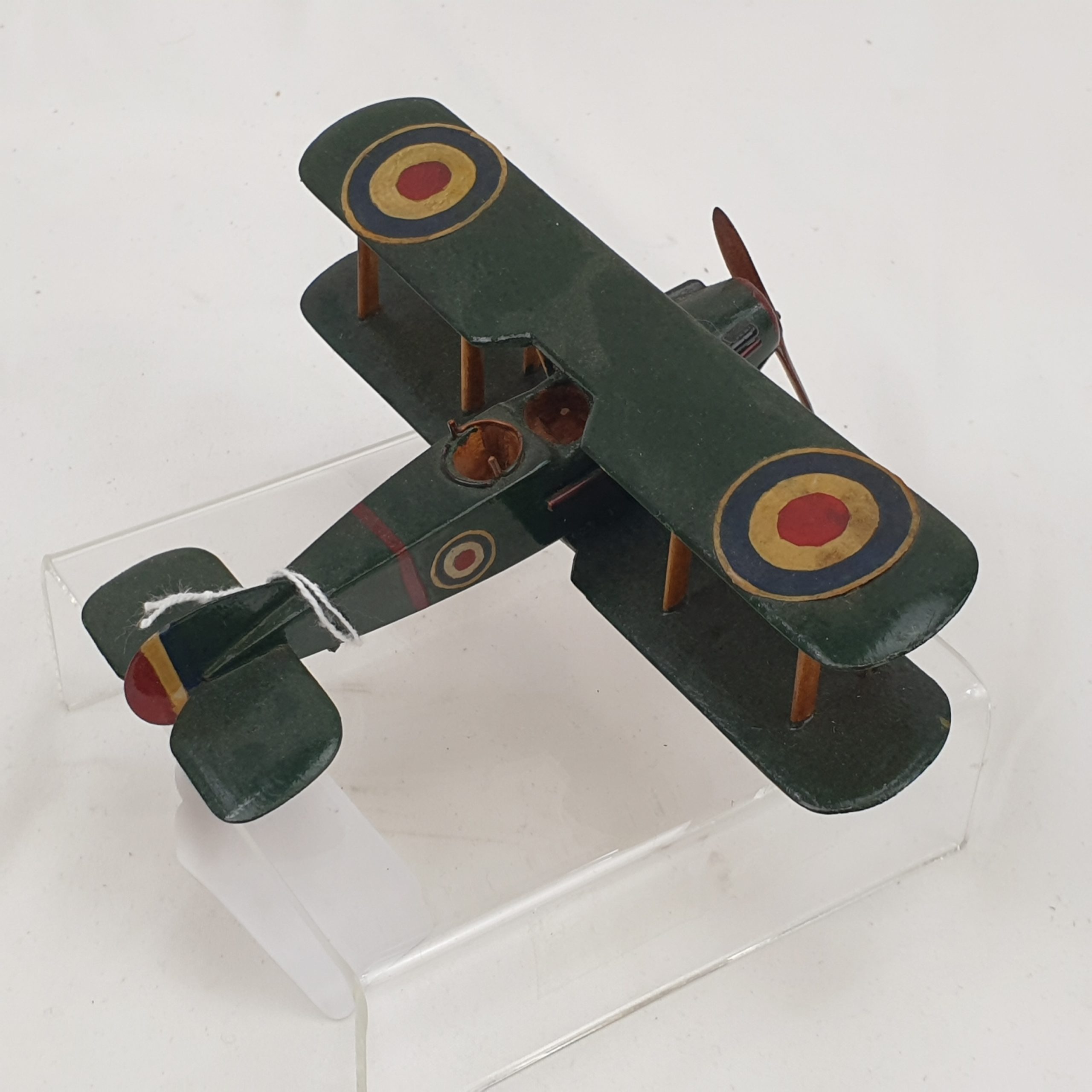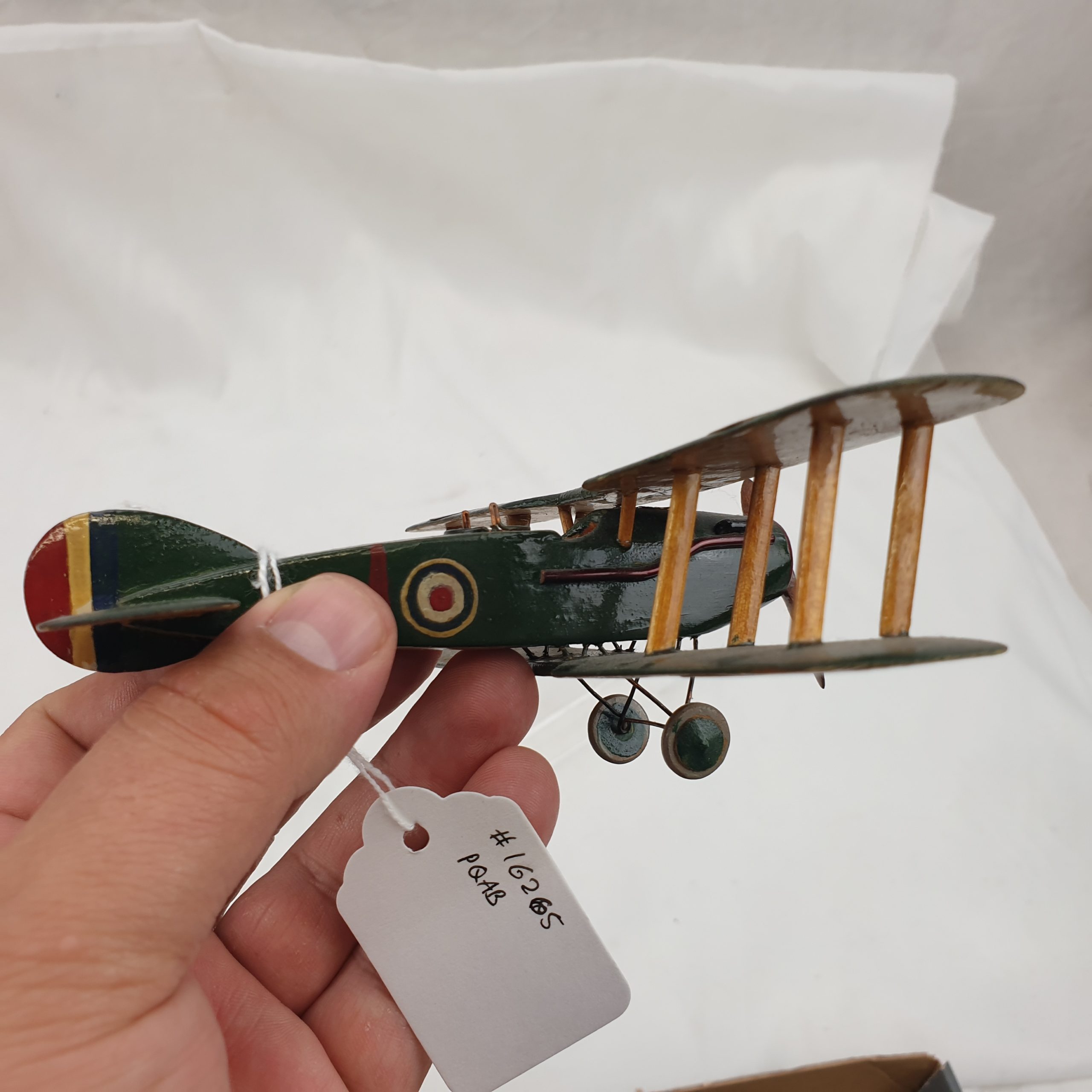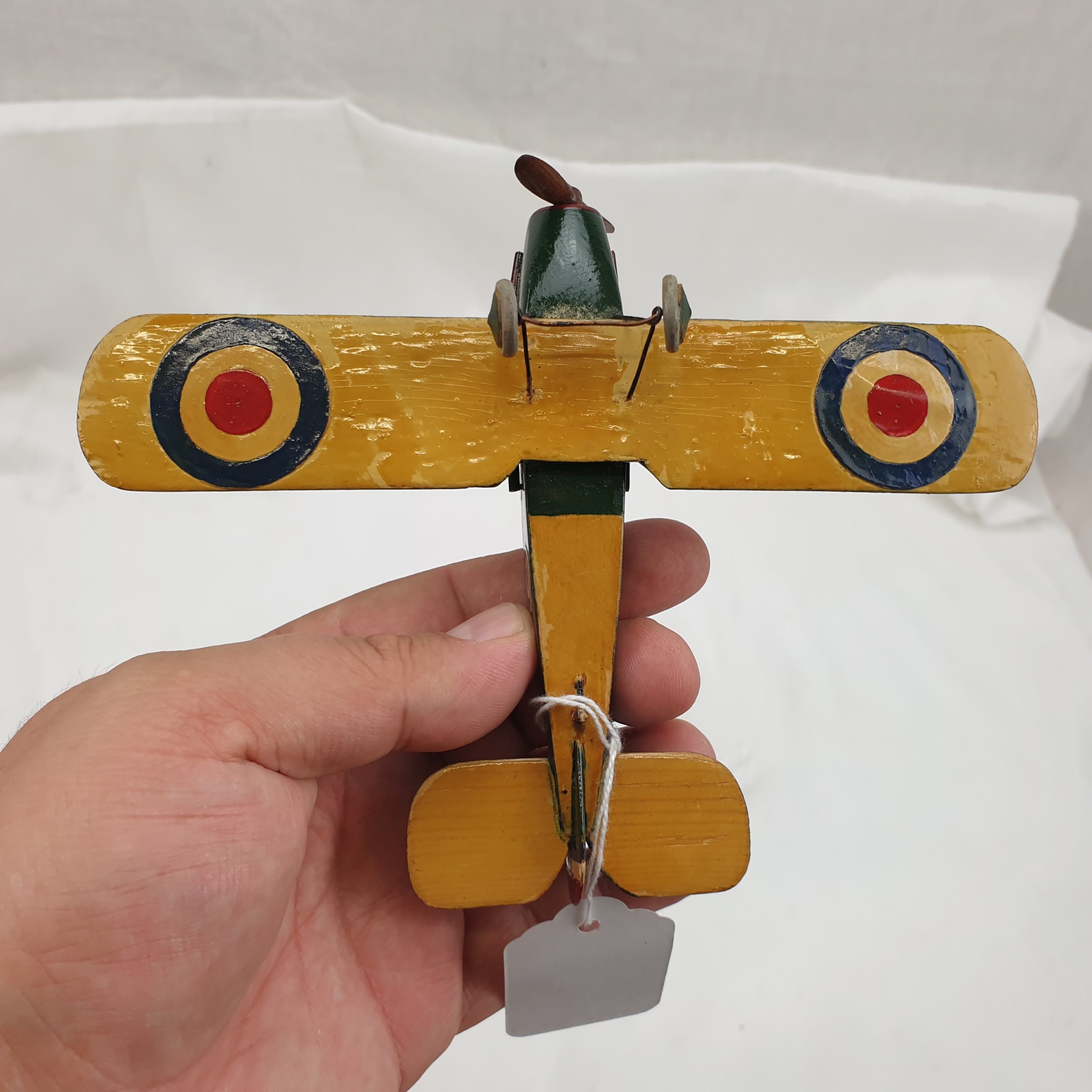~ Model of a British WW1 Bristol Falcon 2 Fighter Airplane ~
The Bristol Falcon II was a British fighter aircraft used during World War I. Although it did not achieve the same level of recognition as some other fighter planes of the era, it played a role in the early development of military aviation. Here is a brief history of the Bristol Falcon II:
Development:
Origins: The Bristol Falcon II was developed by the British aviation company Bristol Aeroplane Company during World War I. It was an improved version of the earlier Bristol Scout, which was one of the first true single-seat fighter aircraft in the world.
Design: The Falcon II was a biplane with a distinctive, rounded fuselage and a fabric-covered wooden structure. It was armed with a single synchronized Vickers machine gun, which was a standard armament for fighter aircraft of that era.
Performance:
Engine: The Falcon II was powered by various engines during its production, including the Gnome Monosoupape rotary engine and the Le Rhône 9C rotary engine. These engines provided sufficient power for its role as a fighter.
Speed and Maneuverability: The aircraft had a top speed of around 97 mph (156 km/h), which was competitive with other fighter planes of the time. Its maneuverability was a key feature, allowing it to engage in dogfights and aerial combat.
Operational Service:
Role: The Bristol Falcon II primarily served as a fighter aircraft, engaging in aerial combat against enemy aircraft.
Service History: The Falcon II entered service with the Royal Flying Corps (RFC) in 1917, and later with the Royal Air Force (RAF) when it was formed in April 1918. It operated on the Western Front during World War I, where it faced off against German aircraft.
Limited Numbers: The Falcon II was not produced in large quantities, and it did not become as well-known as some other fighters of the era, such as the Sopwith Camel or the SE.5. However, it contributed to the British air effort during World War I.
Legacy:
The Bristol Falcon II represented a transitional period in the development of fighter aircraft during World War I. While it did not achieve the same level of success or recognition as some of its contemporaries, it contributed to the evolution of military aviation technology and tactics.
After World War I, the Falcon II, like many other aircraft of the era, quickly became obsolete as technology advanced. It served as a stepping stone in the development of more advanced fighter aircraft that would emerge in the years following the war.
~ Condition ~
Please see the pictures.
~ Dimensions ~
The wingspan is 16.5 cm and the overall length is 13cm.


